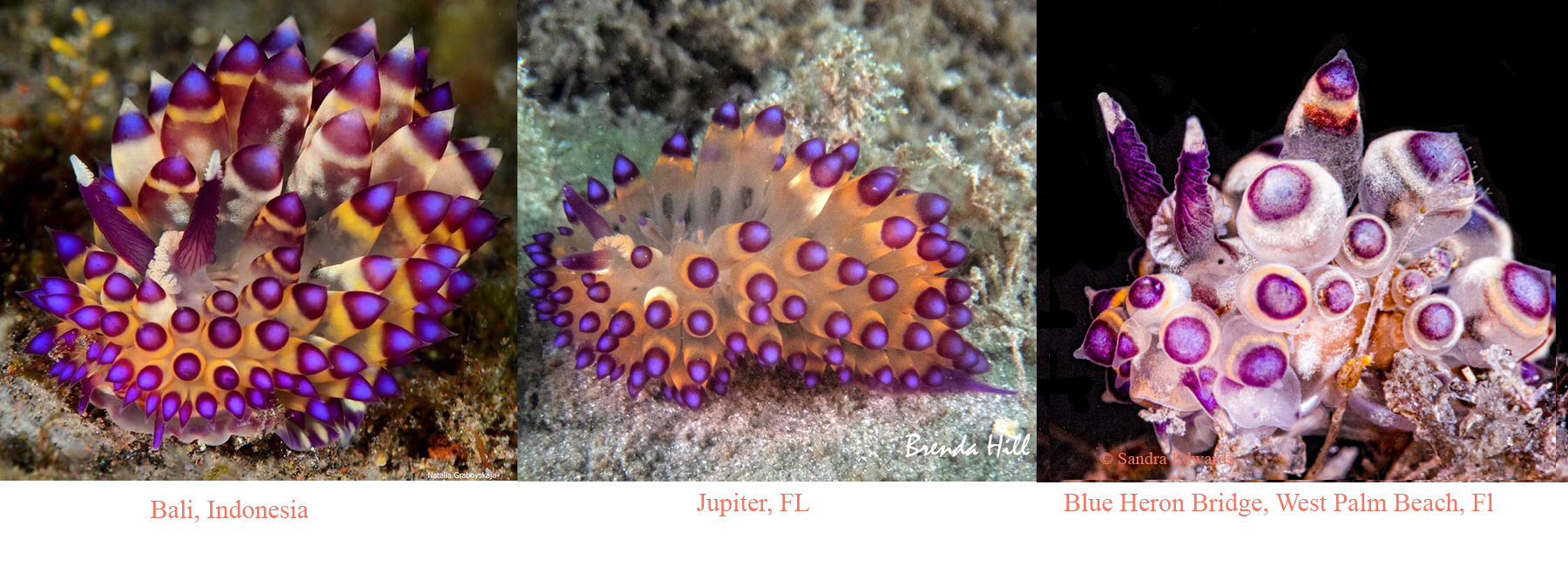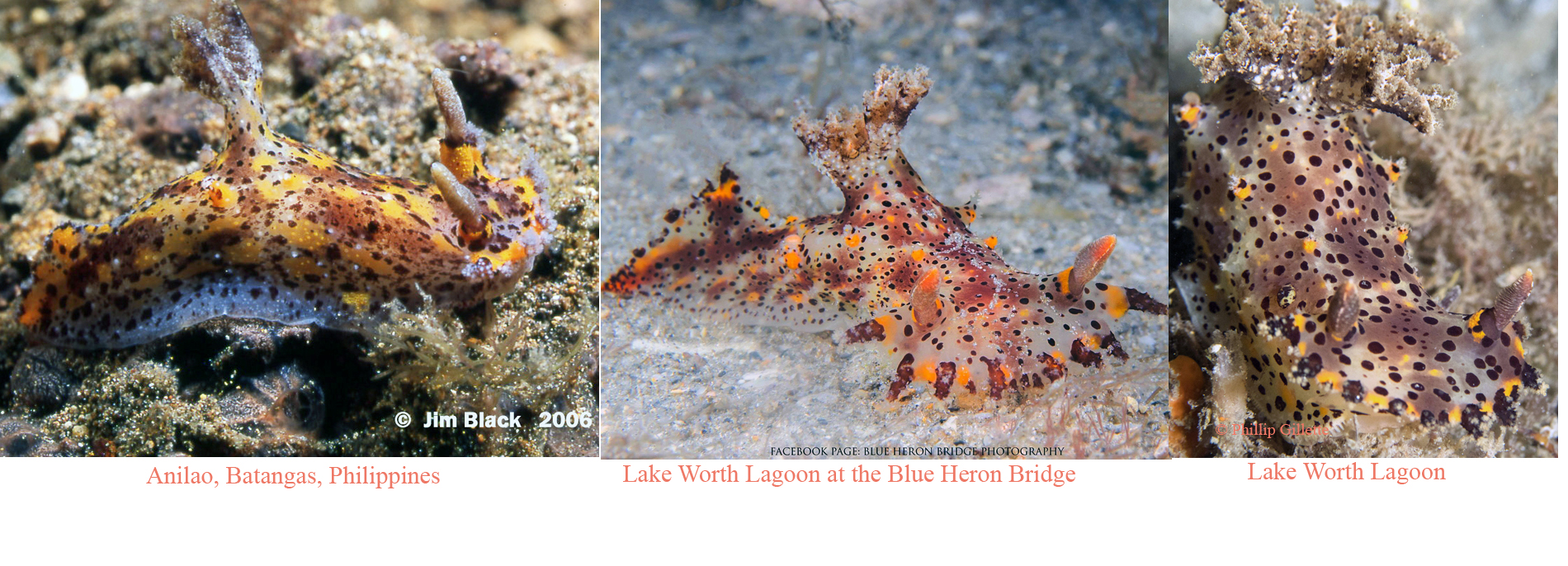Janolus flavoanulatus
Center Photo courtesy of Brenda Hill
Photo at right courtesy of Sandra Edwards
 |
Plocamopherus tilesii
Photo at left courtesy of Jim BlackCenter Photo courtesy of David Sanchez
Photo at right courtesy of Phillip Gillette
To be or not to be an "introduced" nudibranch. A recent conversation between citizen scientist Brancher Anne DuPont in Florida and professional Brancher Dr. Angel Valdes in California has suggested some interesting questions concerning introduced species. Anne and a gang of her diver/photographer buddies have document two sea slug species living in Lake Worth Lagoon at the Blue Heron Bridge in Riviera Beach, FL.which are externally identical to two Indo-Pacific sea slugs - Janolus flavoanulatus Pola & Gosliner, 2019 and Plocamopherus tilesii Bergh, 1877. Both are large, flamboyant and easily recognized. Angel replied - "Thank you for sending these. While it is very well possible that these animals are correctly identified, I think we have to be careful. They could also constitute new species native to Florida that have never been seen before. There are other examples, such as Placida cremoniana of which several populations found all over the world in recent years and were thought to be the result of introductions, but it turned out to be a species complex with several endemic species. So, to be sure, we need molecular data to confirm the identify of these animals." Okay - So if these are introduced species from the Indo-Pacific - how did they get there? Additionally - Anne originally referred to these species as invasive introductions. The perfect example of an invasive introduction in the Florida/Caribbean region is the venomous marine fish, the Lion fish, Pterois radiata and Pterois volitans. How did this happen and what have been the consequences? One story is that this introduction may have occurred in 1992 when Hurricane Andrew destroyed an aquarium in southern Florida, releasing six Lionfish into Biscayne Bay. Since then they have been described as "one of the most aggressively invasive species on our planet" and their presence has led to massive reductions of endemic fish species in the region. So back to Angel's comments - "I would be careful to the term "invasive" which is typically reserved to species that cause some sort of ecological harm and spreading rapidly. In this case, it seem like these animals, if confirmed, should be considered "non-native" or "alien" until there is evidence that are found beyond Lake Worth Lagoon or causing problems with native species." Perfect Angel - I agree. Anne has since contacted all the aquarium shops in the area and none have sold either of these species. This suggests that Angel may be right on, and if we can do some molecular analysis maybe we will eventually find the answer. Time will tell. I must say that the coincidence between Anne's buddies photos and the known Indo-Pacific species is astonishing. When I first saw them, I too was convinced. This is just another example of how - Citizen Scientist's ROCK! Reference:
Pola M, Hallas JM, Gosliner TM. Dave Behrens Sammamish, WA 98074 Jul., 2021 Send Dave email at davidwbehrens@gmail.com
I would like to thank Anne DuPont for getting the ball rolling on this most interesting BOW! And the encounter of these "Indo-Pacific" branchs in our own back yard brings to mind the hassle regarding over seas travel during the Covid-19 pandemic. Hummm, after Elsa passes through I will definitely be looking into a diving trip to West Palm Beach, Florida!
Michael Miller |

Attention all you Sluggers, and you know who you are! The NSSI 2nd edition is now available in ebook PDF and book form . The hard back version will become available Nov. 1st. Both will cost $65 (individually). You will need to jump through a few hoops to get the electronic version as pdf distribution is protected by Adobe ID!! Please read the following to enable reading your electronic purchase! This new 2nd Edition is updated and reorganized, including 185 new species. Among other features, the new edition includes additional photographs of species, an identification key, and an up-to-date classification reflecting the latest evolutionary relationships. The Indo-Pacific represents the largest expanse of tropical ocean in the world, stretching from the Indian Ocean coast of southern Africa and the Red Sea to the central Pacific of the Hawaiian Islands, Easter Island and the Marquesas. This region supports the most diverse marine fauna of any place in the world for most groups of marine organisms. The nudibranchs and sea slugs are no exception to this rule; there are about 3,000 described species of these organisms in the world and at least 40% of these have been found exclusively in the Indo-Pacific tropics. This book illustrates 2,138 Indo-Pacific nudibranchs and sea slugs, including many undescribed species.
|

|

